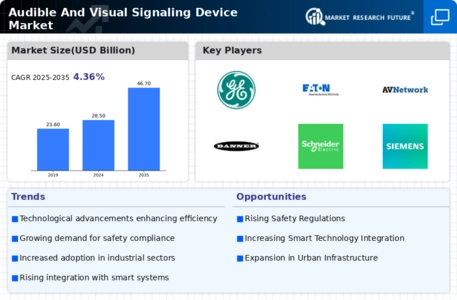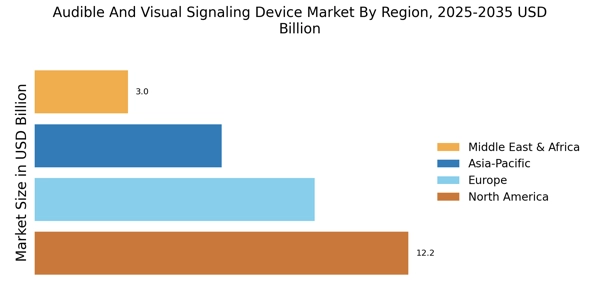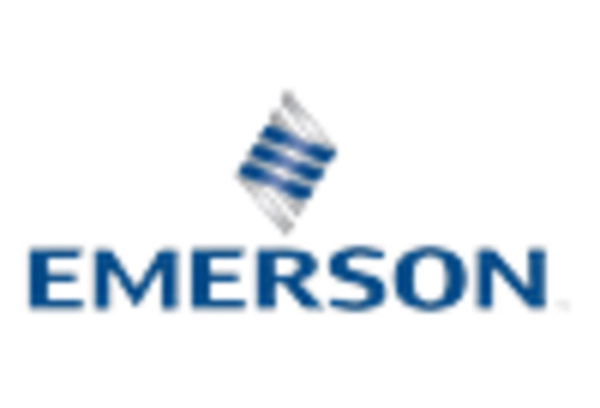Regulatory Compliance
The Audible And Visual Signaling Device Market is significantly influenced by stringent safety regulations across various sectors. Governments and regulatory bodies are mandating the use of signaling devices to ensure workplace safety and compliance with health standards. For example, industries such as construction and manufacturing are required to implement effective signaling systems to prevent accidents and enhance worker safety. This regulatory push is expected to drive the market, as companies invest in compliant signaling solutions. Recent statistics indicate that the market for safety signaling devices is anticipated to reach a valuation of over 2 billion by 2026, reflecting the growing emphasis on regulatory adherence and safety measures.
Sustainability Trends
The Audible And Visual Signaling Device Market is also being shaped by sustainability trends. As organizations strive to reduce their environmental footprint, there is a growing demand for eco-friendly signaling devices. Manufacturers are responding by developing products that utilize sustainable materials and energy-efficient technologies. For instance, solar-powered signaling devices are gaining traction in various applications, from traffic management to emergency alerts. Market analysis indicates that the segment for sustainable signaling solutions is expected to grow by 10% annually, reflecting the increasing importance of environmental considerations in purchasing decisions. This shift towards sustainability is likely to create new avenues for growth within the Audible And Visual Signaling Device Market.
Increased Urbanization
The Audible And Visual Signaling Device Market is also being propelled by the trend of increased urbanization. As urban areas expand, the need for effective communication and signaling systems becomes paramount. Urban environments often present complex challenges, including traffic management and emergency response. Consequently, municipalities are investing in advanced signaling devices to improve public safety and streamline operations. Data suggests that urban areas are projected to grow by 1.5 billion people by 2030, necessitating enhanced signaling solutions. This demographic shift is likely to create substantial opportunities for manufacturers within the Audible And Visual Signaling Device Market, as cities seek to implement more efficient and reliable signaling systems.
Technological Advancements
The Audible And Visual Signaling Device Market is experiencing a surge in demand due to rapid technological advancements. Innovations in sensor technology, wireless communication, and smart integration are enhancing the functionality of signaling devices. For instance, the incorporation of IoT capabilities allows for real-time monitoring and alerts, which is becoming increasingly essential in various sectors such as manufacturing and transportation. According to recent data, the market for smart signaling devices is projected to grow at a compound annual growth rate of approximately 8% over the next five years. This growth is indicative of the industry's shift towards more sophisticated and interconnected systems, which are likely to improve operational efficiency and safety.
Growing Awareness of Safety
The Audible And Visual Signaling Device Market is witnessing a heightened awareness of safety among consumers and businesses alike. This growing consciousness is driving demand for signaling devices that can effectively alert individuals to potential hazards. Industries such as healthcare, education, and public transportation are increasingly adopting advanced signaling solutions to enhance safety protocols. Recent surveys indicate that over 70% of organizations prioritize safety measures, which is likely to result in increased investments in signaling technologies. This trend suggests a robust growth trajectory for the Audible And Visual Signaling Device Market, as companies strive to create safer environments for employees and the public.


















Leave a Comment